Mason – The MusicTech Interview
From touring with Tiesto to getting his music featured in high-profile games and TV shows, Mason has made a career in the dance genre where others haven’t lasted. MusicTech talks to the Dutch über producer who reveals a lot of tips for us all… Scoring a huge hit across the globe in dance-music circles doesn’t […]

From touring with Tiesto to getting his music featured in high-profile games and TV shows, Mason has made a career in the dance genre where others haven’t lasted. MusicTech talks to the Dutch über producer who reveals a lot of tips for us all…

Scoring a huge hit across the globe in dance-music circles doesn’t necessarily mean you will maintain a long career after it. Such are the fashions of the genre – or its multiple sub-genres – you could be No. 1 one month and no one the next – without a hit to your name ever again.
Fortunately for Mason, this is not the case. The Dutch-born DJ and producer had just such a hit with Perfect (Exceeder) back in 2007, a track that featured vocalist Princess Superstar and a single that got to No. 3 in the UK charts – it was successful around the world, making Mason a production name overnight. But far from being a one-hit wonder, he followed it up with more success with the tracks Runaway and Boadicea, featuring Roisin Murphy.
Since then, Mason hasn’t stopped and has filled the intervening years with releases on labels including Island, Toolroom, Fool’s Gold, Boys Noize and his own label, Animal Language. He has toured with Tiesto, played festivals including Global Gathering and Creamfields, clubs like Ministry and Space, and remixed everyone from Moby to Mylo.
Like we said, this isn’t someone content with an initial spark of success and Mason is certainly making his mark on the world of dance music. After 10 years of doing just that, MusicTech caught up with him to discuss his production philosophy and to glean some tips on how to maintain such a high profile and musical output…
MusicTech: Tell us about how you got into music?
Mason: I started to play violin when I was about six years old, and when I was eight, I started to sing in a famous Dutch children’s choir. We were singing songs on TV and recorded in these giant analogue recording studios. I totally fell in love with all that impressive music equipment.
During breaks, when everyone would play outside, I would stay indoors around those tape recorders and giant mixers with the engineers (think ponytail, black shirt, old sweat). I then decided I wanted to become like them when I grew up. I sort of have, although without the ponytail and sweaty shirt (or at least most of the time).
However, I didn’t know that writing music could be fun, too. When I was 15, I borrowed my grandparents’ turntables and started to combine hip-hop records for my mix tapes, and record those at a higher volume than my parents would appreciate. From that point onwards, DJing has been my biggest love.
MT: Tell us about the first time you realised you’d made it…
Mason: I’ve been DJing for more than 20 years now, so there wasn’t one single moment, but more like a few key moments. For instance, my first shows in Amsterdam were a big thing. I have this monomaniac tendency to spend crazy hours on whatever I find important, so I made some progress DJing as a teenager – I just spent twice as much time on practising than any other aspiring kid I knew. Soon, I could play in clubs I that I was far too young to go to as a regular visitor!
Around the millennium, I played electric violin over my DJ set for a while, and Tiesto saw me playing one of those violin DJ sets in Peru. He then invited me on his world tour as his violin player, as well as being his warm-up DJ, which was really exciting.
A few years later, my Exceeder record blew up, which also changed my life. Apart from the pretty hectic touring it caused, my productions also began to get attention, which is what I really wanted.
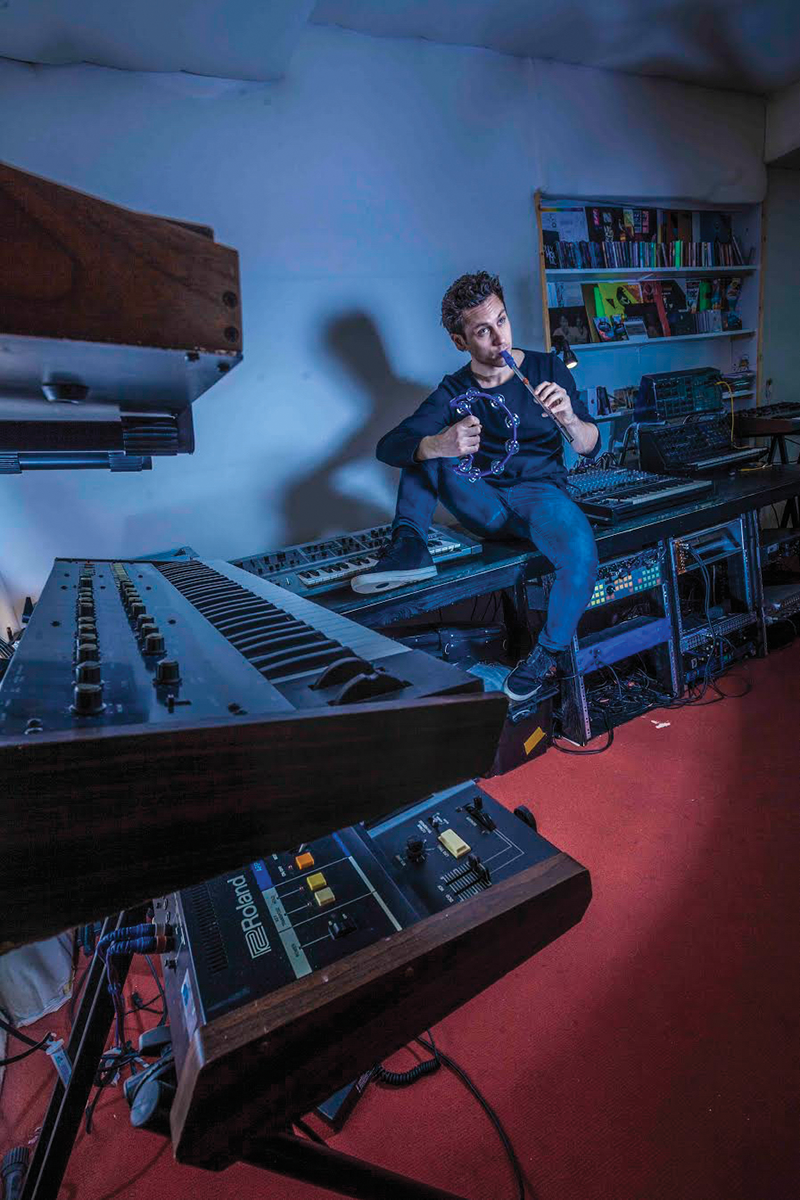
Mason works more in-the-box than he has in the past, but his studio setup still has a bit of everything from hardware synths, to modular, to outboard…
The Mason Setup
MT: You discovered studios at an early age, but tell us about your own initial setup?
Mason: My nephew owned a Roland MC-303 Groovebox, but didn’t exactly know how it worked. When I got my hands on it to play around with, I realised I urgently needed one, too. Quickly, an old AKAI S700 joined the gang (four seconds’ sample memory!) and I was off, freaking out. In ’98, I did a four-year art academy course around electronic music and by that time, audio recording and plug-ins where just becoming more popular.
I remember I was totally flabbergasted when I first saw a waveform in a computer that could be manipulated. You appreciate that stuff a lot more when you grew up in a pre-audio studio age.
Now, the speed of technology these days gives you much more time to be creative, and that’s what it’s all about. Technology is fun and can also be inspiring at times, but at the end of the day, it’s about the cook and not about the kitchen. It’s your ideas that matter, and with modern-day technology you can get your ideas quicker ‘on tape’ than ever.
The more technology helps us to make stuff sound good easily, the more time we can spend on what’s more fun and important: writing good material.
MT: What about your setup now?
Mason: I’ve grown up using Logic, so that’s the core of my musical setup. I started using Logic when it was still black and white and a pretty simple program. It grew and grew and is quite a beast now in terms of functionality. However, it doesn’t mean I think it’s necessarily better than the other DAWs.
I just think it’s important to stick to one of them and get really fast and good at using it, so that stuff goes automatic and there’s more time left for the fun part: writing music.
Other than that, over the years there have been periods where it was mainly outboard stuff with big mixers and so on, but right now, I’m working more in-the-box. I do use a few analogue synths, compressors and effects, but nothing extreme. For monitoring, I use simple but solid Adam A7Xs.
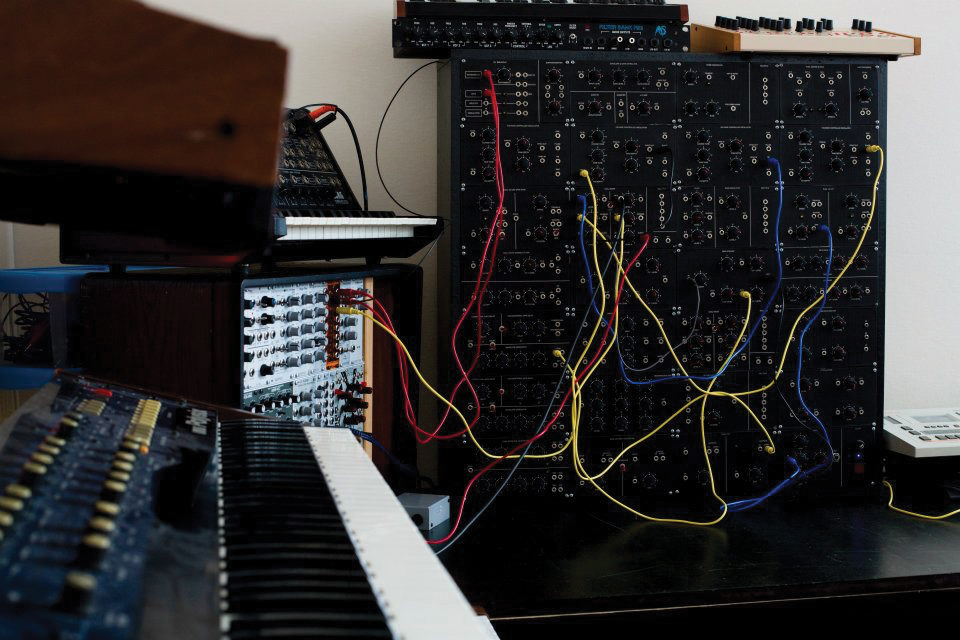
Mason loves the sound of modular, but cautious against ‘Lego Syndrome’
MT: So you say you do a lot in-the-box. What are your favourite plug-in synths and why?
Mason: I’ve used the Arturia ARP2600 a lot over the years. It’s super versatile and can do pretty much whatever you like it to do, once you know your way around it.
Recently, I got pretty excited about a plug-in called Serum that’s fun to work with. But also Logic’s own new Alchemy synth is straight away up there with my favourite soft synths and is pretty powerful.
The modulation possibilities are endless, and the synthesis possibilities, too.
For instance, it lets you import an audio file as a wavetable source, so you can get pretty extreme results (try vocals!). I also really dig everything from Sonic Charge. Microtonic is a great tool for weird drum sounds, and their recent Permut8, although not a synth, is lots of fun, too.
MT: Does anything annoy you about using software to make music?
Mason: It’s tempting to write everything with the click of your mouse, but that can kill the musical vibe and make everything sound a bit robotic and artificial. Especially in dance, it’s good to try and keep music sounding a bit organic by triggering drums live, or recording the notes of that synth on your master keyboard instead of drawing them with your mouse (and make sure quantization is switched off!).
MT: And what’s the best thing about software?
Mason: The sky is the limit sound-wise, and there are so many useful tools these days that there’s nothing to stop you from being creative and experimental.
Plus, there’s the fact that all these developers are challenging each other to come with a more extreme synth or effect that’s better than the previous ones, and that is a competition we musicians can only thrive on. Apart from that, it’s great that your data just gets saved forever in drives and the cloud.
In the past, I had to include pictures of modular setups, or save floppy disks for each project, that could get scratched or have beer thrown over them and your project was gone forever.
MT: That’s interesting what you say about the developers. What would you like to see them come up with?
Mason: I’m still searching for the perfect delay plug-in that can vary within super-small delay times, so the sound starts to FM a bit. In most plug-ins, you either can’t get the delay times that small, or it goes in too big steps, while I’d want it without steps. If anyone knows of such a plug-in, hit me up.
MT: What else is on your wish list software or computer wise?
Mason: I’m drooling on that new Mac Pro a bit, the one that looks like a weapon of mass destruction…
MT: What about taking a computer out live? What experiences have you had here?
Mason: I have played live with computers on stage in the past, and there are great possibilities. We created this software in 2012 where all material I used in my Ableton Live setup was connected to video material and also to light sequences.
It could work in any venue without bringing our own lights, keeping everything flyable. It took three hours to get all the lights of any given venue connected to our system, but when that part was done, I could take complete control over the lights, video and music when I was on stage.
Challenges-wise, it almost goes without saying you should have a fast, reliable computer on stage, with only SSD drives, and don’t put your drinks on any of it!
MT: What about DJing – same question…
Mason: There are a lot of great programs and tools out there for DJing with your laptop, but it just looks a bit dull to see someone behind a laptop screen on stage, in my opinion. I see people behind laptops in Starbucks already for free every day, and this is show business.
Besides, I’m a bit of a romantic when it comes to DJing, I just want some decks, a mixer, and I’m pretty happy.
Mason’s Top Three Effects
We asked Mason about his favourite effects, but in his words: “I don’t know where to start as there are so many”. So we got him to choose three…
1: Sample Magic A/B
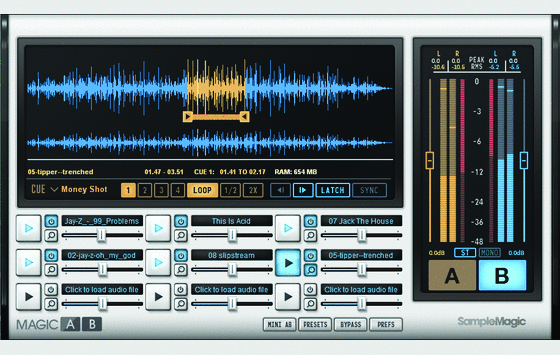
Probably the most simple plug-in ever written. Select a few tracks by other people you think are amazingly mixed. Put AB on your master channel, and with a mouse click, you can switch back and forth between your track and the reference tracks, to hear what the difference is in dynamics, frequencies, space etc.
Normally, you’d have to stop your sequencer, hide it, go to your desktop and look for that reference track. However, your ears only have a very short, two-to-three-second ‘sound memory’, so that route takes too long. It’s super simple, but this helped my sound a lot.
2: SPL Transient Designer
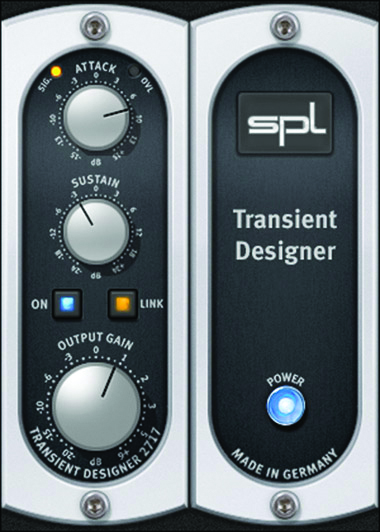
I think transient designers are a good addition to dynamics plug-ins. I use this a lot; to make sounds have more of a punchy attack, to reduce the ‘sustain’ of a sound – so, the low volume rumble or unimportant stuff in a drum recording or loop, for instance – and focus on the attack. Drums, bass, leads… I use it on everything, really.
3: Voxengo Span
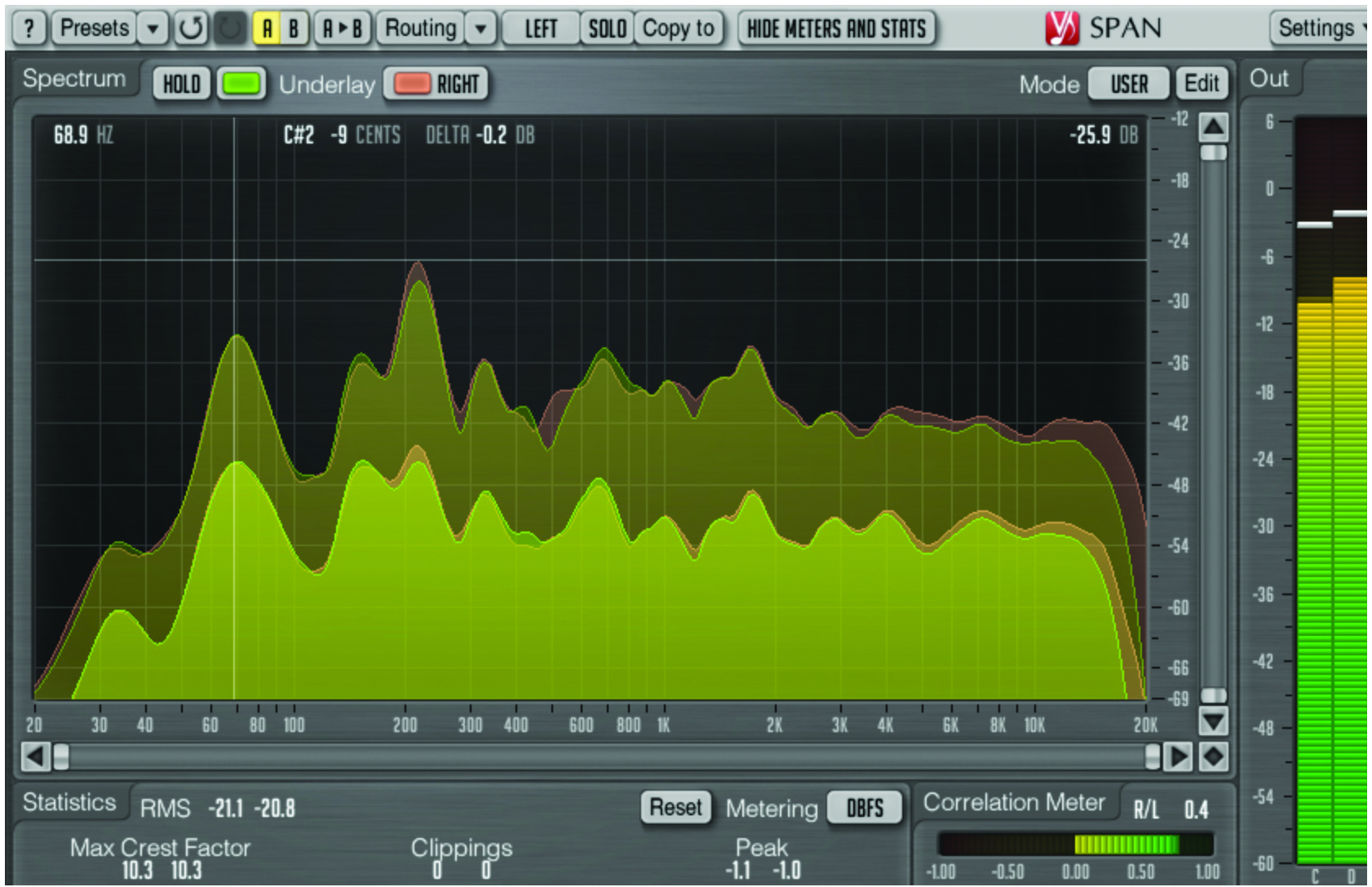
This is really useful. As far as I kno,w the only program that lets you compare two audio signals and view them visually in one graphical EQ screen. So if you want to compare and adjust the frequencies of your kick and your bass, for instance, you can see them together with Span, and see where EQ needs to be adjusted to avoid frequency clashes.
I do this every track as a standard routine. Look up on YouTube how to set this up, cause it’s a little tricky, and make sure this is standard loaded on your new template!
Back to Hardware
MT: Of course, the big movement in studio technology over recent years has been a return to hardware and analogue. We see you have some modular synths…
Mason: I used to have shitloads of hardware synths and a pretty decent modular rack in the studio, and the possibilities are endless. However, these days I’m a bit more back to basics, with just a couple of analogue synths and that’s it. The sounds of these modular systems are nice, but you can also get lost and slowly forget about the fact that good tracks are about good musical ideas, and not about tweaking knobs for a hobby.
That scene reminds me a lot of the time I played with Lego. You just kept on wanting more and different kinds of Lego, just to own it, but to hardly use it.
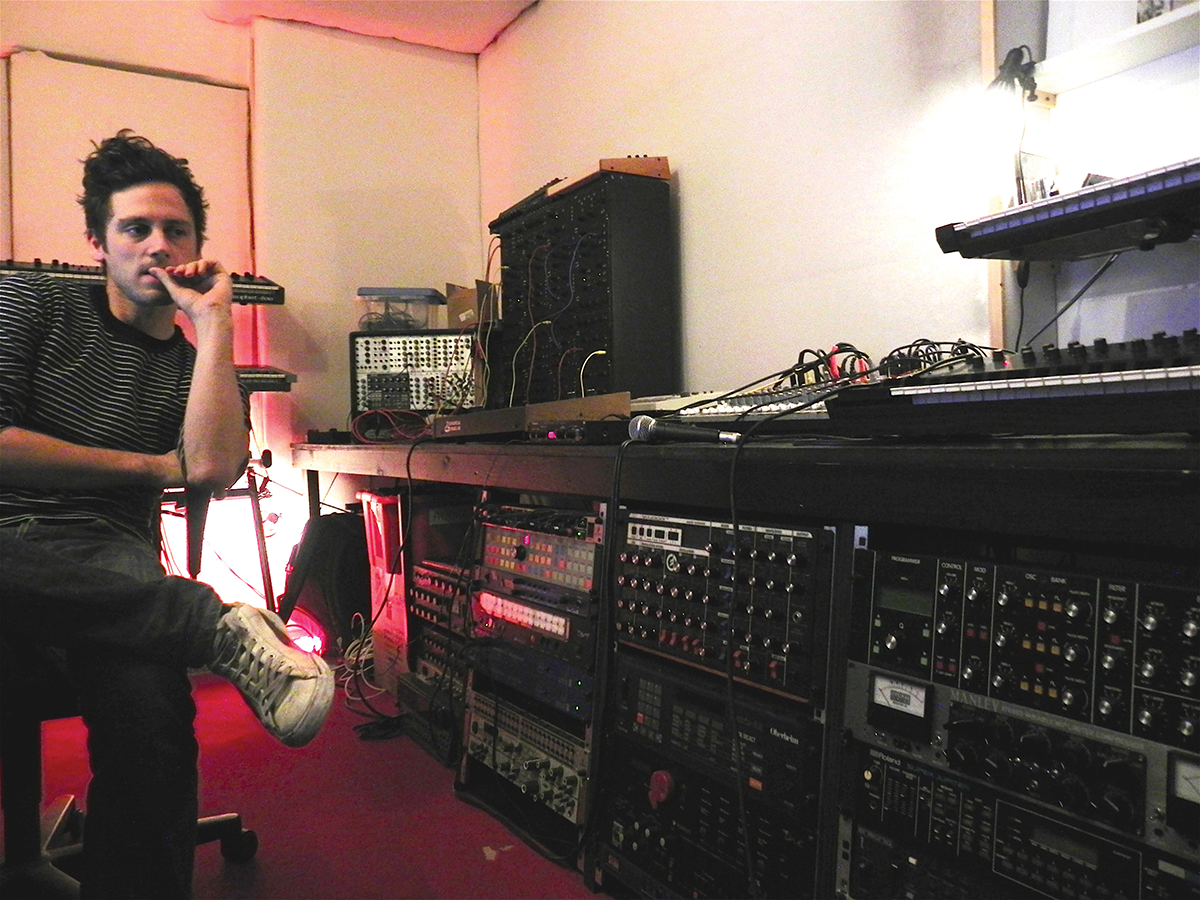
Some of Mason’s hardware kit on display
MT: Is there anything you’d like to see developed hardware-wise?
Mason: I think it’d be great if the DJ and the front of house/lights/VJs could be more integrated technically in a venue. Right now, a light jockey and a VJ respond real-time to what they hear me play. They’re always too late, as they’re responding to what’s happening in music when it’s already happening.
They don’t know what’s coming, as they can’t ‘read’ along with what I’m doing behind the CDJs. However, a DJ could easy provide the tracks they play with markers, cues, info that’s useful to them. Then they could see a drop coming from miles ahead, they can prepare when there’s a breakdown coming, or would know about an upcoming dark or happy bit. New territories, I guess…
MT: What about production technology as a whole and the fact that it has levelled the field for people wanting to make music. Good or bad?
Mason: Finally, everyone with a 300-dollar laptop can make hit records, it’s not only for the rich who can afford studios. So the playing field is levelled, I’d say, although if you live in Uzbekistan, you won’t be able to meet people in real-time as easily, and it is a people business.
However, because of this levelled playing field, there are many more producers than in the past: you have to be pretty damn good to stand out from the trillion releases a week. The good ones usually do, but the bar has definitely been raised. I see it as a good thing, but it can be a shame how much music is overlooked and gets forgotten.
Mason’s Kit List
• Apple Mac Pro and MacBook Pro
• Apogee Ensemble interface
• Mackie Big Knob
• Adam A7X monitors
• Emagic AMT8 interface
• Manley Variable Mu compressor
• Focusrite TrakMaster channel strip
• Clavia Nord Lead 2 synth
• Roland Juno-60 and Roland JX-3P synth
• Some modular synth modules
• Some instruments (as in: not electronic)
• Livid Instruments Ohm 64 controller
• sE Electronics Z3300a mic
• Pioneer DJ setup
• Espresso machine!
• Software – Logic Pro X at the core of everything, but also occasional Ableton Live. Additional software by Arturia, Waves, FabFilter, Xfer, Sonalksis, Sonic Charge, Sugar Bytes, Soundtoys, LinPlug, iZotope… well, the list goes on
Mason Advice
MT: What advice do you have for people wanting to get into remixing/production?
Mason: It all starts off with having your own ideas, what you think you can contribute and do differently from what’s already out there. Nobody needs another producer who ‘sounds like him or her’. Follow your own path and find your own sound that stands out.
And if you haven’t found what you can ‘add’ to the world of music yet, maybe hold off until you do, ’cause there’s enough musical mediocrity out there. Especially in the dance scene, a lot of DJs feel they need to release ‘something’ to boost their DJ career.
However, writing music is an artform, just like painting or writing a book is – you need to have something to say artistically to start with.
MT: What advice do you have for people who want to make a living making music these days?
Mason: I think good focus and time management is important, as there is only so much time you can spend on music. Find your own sound, know what you can contribute to what’s out there. Don’t waste time on unimportant things within music. Decide yourself what music to make, don’t let others tell you. And above all: enjoy it all.
MT: And we guess ‘use the net’ is as good advice as you can get…
Mason: There used to be this infrastructure that made you hear different music in every corner of the world. Here in Holland, the record stores would, let’s say, import a few New York vinyls, but these were more expensive than local records and less available.
So people played a lot of music made by local producers, and music didn’t always travel far enough to reach other areas of the world.
This made the international, travelling DJ entertaining, ’cause when that New York DJ would finally play in your town, he’d have all this music you’d never heard of, because it just never reached your record stores.
Right now everyone is browsing in the same online record shop, everything has become borderless and the same music gets played all around the world. However, another big difference is that being an artist, you are now your own shop. You have to create a fanbase who want to follow what music you release or come to your shows. A record store or distributor isn’t gonna do that for you any more, you have to create a scene around you.
So be creative, and spend a lot of energy on your fanbase; your network is all you’ve got these days. There are more ways of doing that – apart from making records, you can also create a scene around you by doing a successful podcast series, a blog or running popular events.
Production Techniques
MT: What inspires a typical Mason track?
Mason: I listen to a lot of old music. People nowadays can be preoccupied with whatever band is currently trendy. However, there’s so much great music behind us, I’m discovering new gems every day.
Apart from that, I create quite a lot of song ideas in my head and record them quickly on my ’phone. I might run off in the middle of dinner, or someone’s sentence, to quickly record something, which is embarrassing at times. It’s funny how a lot of finished tracks still sound quite the same as that original phone message, though!
MT: How does a typical track then come together?
Mason: It starts with mini ideas. I make lots of these small sketches when I’m in a writing period, maybe 50 or so a week. I select the one or two strongest ones and work those out into full tracks, which takes much more time.
The others are saved and archived. I currently have about 7,000 of those demos in one folder – they pile up!
I work this way because I think the core of a good track is a strong hook line. If you just work out any track, you can surely make something sound fat, but if the underlying idea isn’t super-strong, it’s like polishing a turd. The production time on a track takes me three full days on average, so I’m saving those days to work on the strongest ideas, not the mediocre ones.
MT: What would you say makes your sound?
Mason: The devil is in the detail. I spend a lot of time in getting a groove right, which means endlessly placing a little sound a few milliseconds forward or backward, until it starts to work in a groove.
I enjoy that process now more than a few years ago. Apart from that, it’s important to listen to a lot of music. Not at all to copy, but it’s useful to know what the clichés are and what’s been done before, so you can avoid that.
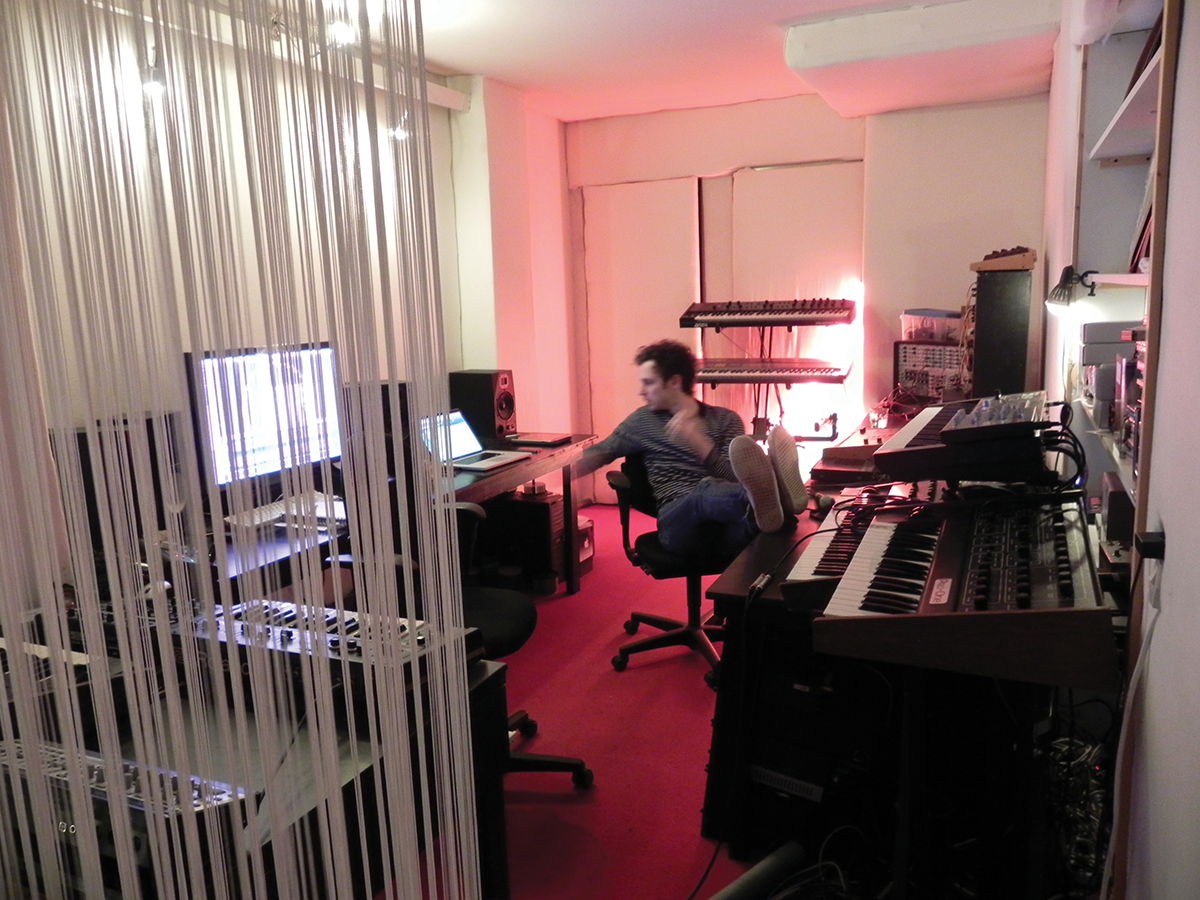
Mason’s studio setup has been stripped down over the years, and has a streamlined and minimalist feel
MT: Tell us about your latest project…
Mason: I’ve just been signed to Island Records. It’s quite an honour to be able work with the people that have guided the career of Amy Winehouse, U2 and Justin Timberlake. My latest single on Island Records is called Fashion Killa (Papapapa) and features vocals from UK grime star, Stefflon Don.
MT: You’ve worked with, and remixed a lot of people. Who else would you like to work with?
Mason: There is a really nice indie dance/nu disco/house scene in the Netherlands these days, that’s very different from all the other EDM, techno or deep house that’s out there in Holland.
It’s very inspiring; check out this blog about it called www.dutchdisco.com. There are many people I’d like to work with, although naming them would be jinxing it a bit! But, I grew up with West Coast hip-hop in the early 90s, so guys like Dr Dre and Snoop Dogg, but also the P-Funk, which they based their music on, inspired me a lot.
MT: And you’ve had a fair bit of your music used in film and TV…
Mason: Yup, publishers, labels and managers are always trying to get my music up on TV and in games, which has worked out quite a lot of times. For instance, you can catch my Fashion Killa single in the current Deezer and Boohoo TV ads. I have done some writing for film and TV in the past, too. Last year, I wrote some tracks for the movie Full Contact, which I really enjoyed.
If you want to get into writing music for TV/film/games, it’s best to find a good publisher, but there are also good agencies around that act like brokers between the TV world and composers. In my case, my focus is on my own material and not on these kind of things. However, creatively, it’s a challenge and fun though, and nice to be able to work on something that’s not only dancefloor-focused.
MT: You’re clearly doing well with sync-ing and remixing as well as your own music, but would you say it’s harder than ever to do that these days?
Mason: The music industry is changing at a rapid pace. With the explosive growth of streaming services, the record industry is closing the ‘gap’ that started to occur since people stopped buying physical products like CDs.
However, a big part of the streaming revenue isn’t going to the music creators as it should. This is the so-called ‘value gap’. On the one hand, streaming services pay – in my opinion – too much to record labels and too little to publishing. Another problem for us composers is that a lot of platforms pay very-little-to-nothing, because they hide behind the so-called ‘Safe Harbor’ regulations.
Those laws were implemented in 2001 to avoid cable/’phone providers becoming accountable for the content their users transmitted, as they were the middle man, just providing the infrastructure. This was a time when smartphones or social media didn’t exist yet. Now online giants and social-media platforms hide behind the same laws, saying users upload music themselves, so they’re not responsible for the content and don’t have to pay the rights holders.

The real mastermind behind Mason’s 2005 track, The Screetch
However, slowly, artists are uniting and pushing politicians to make the necessary changes, which will lead to a tremendous amount of extra income for music rights holders. This is really needed in a time where there’s illegal downloading, very low fees per stream, and hardly any physical sales left.
A thought you hear a lot these days is that artists can see their records as promotion and a means to raise profile, to earn it all back financially by doing shows. However, the live performance side didn’t all of a sudden triple in size and make up for all the loss artists encounter from the record-industry collapse. On the contrary: club and festival programmers are aware of the power they’re holding, and more than ever, acts are asked to play for free, or so little it doesn’t recoup the cost of touring.
MT: What’s coming up next for you?
Mason: I have releases coming up on Island Records, Loulou Records, Bunny Tiger, Sweat It Out, Kittball, Warner, and of course my own Animal Language label. There are also collaborations on the way with Yolanda Be Cool, Lifelike and others.
Oh, and we’re doing a compilation album with my Animal Language label and and I’m throwing some parties here in Amsterdam… and tours… and… well, you get the idea, I don’t get much sleep!
Mason Feat. Stefflon Don Fashion Killa (Papapapa) is out now on Island Records. Buy it here: For more info on Mason visit: www.musicofmason.com